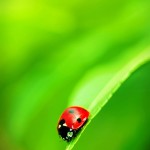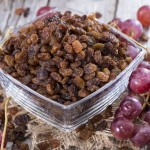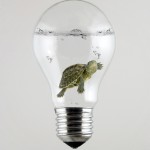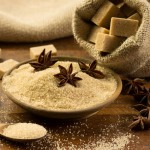Weekly Wrap Volume 80
 Why “C” is the Default Hard Drive Letter in Many Computers
Why “C” is the Default Hard Drive Letter in Many Computers
For nearly as long as hard disk drives have been placed in personal computers running certain popular operating systems (notably MS-DOS/Windows), the primary hard disk has been designated with the letter “C”. But why? The idea for designating different storage devices with simple letters is generally attributed to IBM’s virtual machine operating systems developed in the 1960s, starting with their CP-40 and CP/CMS systems, and later very notably, among others, copied by the CP/M operating system created by the company Digital Research, Inc. In the early systems (CP/CMS) the letters were used mostly to designated logical drives, although later (such as with CP/M), they were used to specify physical storage devices. This all brings us to 1980 when… (more)
Almost every planet in our solar system and their respective orbiting moons have names taken directly from Greek and Roman mythology. For example, Mars is named for the Greek and Roman god of War, also known as Ares, while its moons, Deimos and Phobos are named for his sons. Likewise, Jupiter is named after Zeus while quite a few of its moons are named after certain of his sexual conquests. This tradition is largely true for every planet in our solar system with the singular exception of the moons of Uranus which are named after characters from the plays of Shakespeare. The only other exception to this naming convention are the decidedly generic sounding names of the Earth and Moon. Since we’ve… (more)
 The Fascinating Reason Why Ladybugs are Called That
The Fascinating Reason Why Ladybugs are Called That
Ladybugs, sometimes known as Ladybirds and less commonly Lady Beetles, are a rarity in the insect world in that they’re one of the few creepy crawly insects we as a species don’t actively dislike, due to their habit of eating the things that destroy our crops. But just how did this little insect get such a strange name? To start, while many members of the Coccinellidae family are colloquially known as “ladybugs” in a number of places in the states, technically speaking they aren’t considered to be true bugs. It’s more fitting to instead refer to them as beetles. While it’s certainly true that ladybugs possess several key qualities that bugs share, to be classified as a true bug… (more)
 How Were Raisins Made Before Seedless Grapes?
How Were Raisins Made Before Seedless Grapes?
Leaving fruit to dry out in the sun is one of the oldest and easiest ways of preserving this variety of food- our ancestors being the type to never waste anything edible, even if it is sometimes past its prime (see: The History of French Toast). Not only did dried fruit keep longer and take up less space than fresh fruit, it was also sweeter and, some would say, more flavorful. As the cultivation of grapes spread quickly through the ancient world, so did the popularity of raisins. It’s impossible to pinpoint the exact time and place, but it’s generally believed that grape cultivation originated in the area of modern day Armenia and then expanded to the Tigris-Euphrates region around 4000 B.C.E (which is now Iraq, Iran and Turkey.) The locals were already drying… (more)
 What Is the Origin of Freshman, Sophomore, Junior and Senior?
What Is the Origin of Freshman, Sophomore, Junior and Senior?
Rather than referring to a student’s year of study, in U.S. high schools and colleges, first year students are freshmen, second years are sophomores, third year students are juniors, and the most experienced are seniors. Yet although this practice seems uniquely American, its origins date back several centuries to Cambridge where in 1688: “The several degrees of persons in the University Colledges . . . Fresh Men, Sophy Moores, Junior Soph, or Sophester. And lastly Senior Soph.” That said, the origins of these individual terms go back even farther… (more)
Bonus Facts:
- Along with Eric Clapton and Jack Nicholson, Ted Bundy was another famous person to have grown up thinking his mother was his sister. His father is unknown. His mother claims that it was a sailor she met named Jack Worthington, but his family suspected that was a cover up story and his real father is his grandfather, Samuel Cowell. Samuel Cowell and his wife Eleanor were the ones who raised Bundy. Bundy discovered the truth about his mother when a cousin mocked him and showed him a copy of his birth certificate.
- According to a survey done by Crayola in the year 2000 that over 25,000 people voted in, the world’s favorite Crayola crayon color is blue.
- Myth: the last period of the “S.O.S” brand was left off due to an error in the trademark submission. In fact, they meant to leave it off because “S.O.S.” could not be trademarked thanks to the SOS distress signal often being written as “S.O.S.”, even though it’s not actually an acronym. By leaving the last period off, it made the name unique and, thus, the U.S. Patent and Trademark office accepted it.
- Earthworms can consume about 1/2 to 1 times their body weight every day. They also will eat just about any dead organic matter along with processing a variety of garbage and even tiny rocks that have organic matter on them, grinding the rocks into a paste that will enrich the soil. They are quite literally nature’s garbage disposals. Earthworms also force air through the underground tunnels they create, thereby aerating the soil as they work.
- Caryn Elaine Johnson, better known as Whoopi Goldberg, chose the first part of her stage name from often being called “like a whoopee cushion” due to her fondness for frequent flatulence when performing. The second part of her stage name, Goldberg, was suggested by her mother as she felt using a Jewish last name would help Caryn in Hollywood.
- There are some words that change their meaning based on whether the first letter is capitalized or not. These words are collectively known as “capitonyms”. These capitonyms are particularly troublesome when they appear at the beginning of a sentence, as there is no way, based on the single word alone, to tell which meaning is being referred to. Examples of these include: August vs. august (month vs majestic or venerable); Calorie vs. calorie (1000 calories vs. 1 calorie); Moon vs. moon (the Earth’s natural satellite vs. any natural satellite); Divine vs. divine (related to God vs. to discover by intuition or insight); etc.
Other Interesting Stuff:
 Why Stepping on a Lego Hurts So Much
Why Stepping on a Lego Hurts So Much
Right up there with how the gun on the original Duck Hunt game worked, why it hurts so much to step on a Lego brick is one of the questions we’re asked the most, so it’s high time we answered it. As anyone who’s done it knows, stepping on a Lego block is something akin to being shot in the foot by a knife soaked in wasp venom. In truth, this is an inherent danger of allowing a child to exist in your home. While we’ll never know who was the first person to step on a Lego block and curse the day Kirk Kristiansen “borrowed” the idea of Lego bricks from the patented “Kiddicraft Self-Locking Building Bricks,” we can answer the question of why stepping on one of the little buggers hurts so much more than many other common household items… (more)
Prized since ancient times for its alluring fragrance, today musk can mean any of a number of substances used to scent perfumes. However, while in our modern era most musk is synthetically produced, when it first came on the scene, musk was only found in a scrotum-like sac on the bellies of male musk deer. Musk deer are found throughout Asia, including in Afghanistan, China, India, Mongolia, Nepal, Pakistan and Siberia. Small, the largest barely reach 2 feet in height and weigh no more than 40 pounds. The male of the species has a scent gland sometimes called the musk pod that sits between its belly button and genitalia. Resembling… (more)
 Slower Than a Turtle – The Speed of Electricity
Slower Than a Turtle – The Speed of Electricity
You may be surprised to learn that electrons flow through a typical copper wire much slower than a turtle walks. Each wire that conducts a flow of electrons, producing usable electric current, is composed of billions of atoms. To move along it, the electrons have to traverse these atoms, randomly zig-zagging their way as they do, resulting in the net flow rate, called “drift velocity,” in a given direction being quite slow. How slow exactly? To calculate it, we use this formula: I = n*A*v*Q or v = I/(n*A*Q) I is the current, n is the number of electrons per cubic meter, A is the cross-section of the wire, Q… (more)
When we say the word “sugar”, it’s highly likely that the first image to pop into your head is that of the ultra-fine, pure white granulated kind you can buy in most supermarkets. But how does this kind of sugar differ from the less popular brown kind, and why isn’t it as prone to forming into lumps as its dusky cousin? To properly answer this question, we’ll first delve into how sugar (as in common table sugar, rather than other short-chain, sweet, soluble carbohydrates) is produced in the first place, because it’s key to understanding how the white variety differs from brown sugar and why the latter often lumps together. Beyond that, it’s also just interesting. As you’re probably aware… (more)
 Why New York is Called “The Big Apple”
Why New York is Called “The Big Apple”
The earliest documented reference to New York being referred to as “The Big Apple” comes from a 1909 book by Edward Martin, called The Wayfarer. In it, he uses the moniker in a metaphorical sense, rather than a proper name for the city: “Kansas is apt to see in New York a greedy city… It inclines to think that the big apple gets a disproportionate share of the national sap…” The next known documented instance of New York being called “The Big Apple” comes from sportswriter John J. Fitz Gerald who began popularizing… (more)
This Week’s Podcast Episodes:
| Share the Knowledge! |
|







